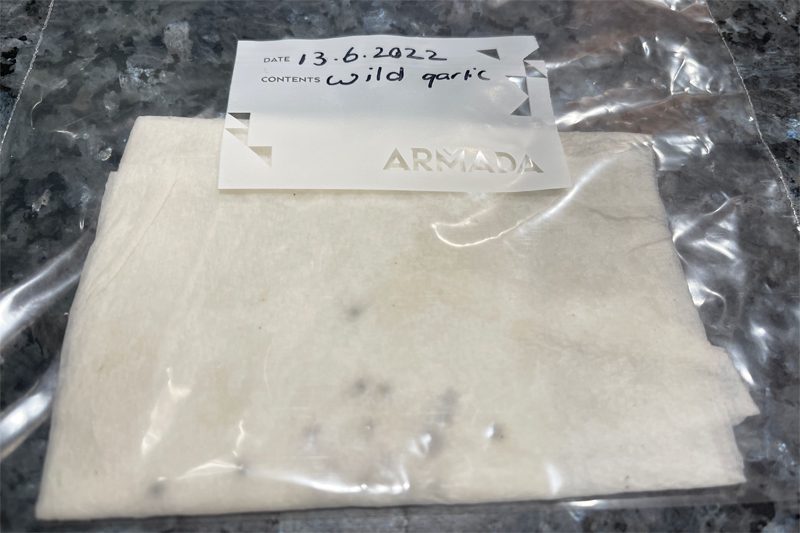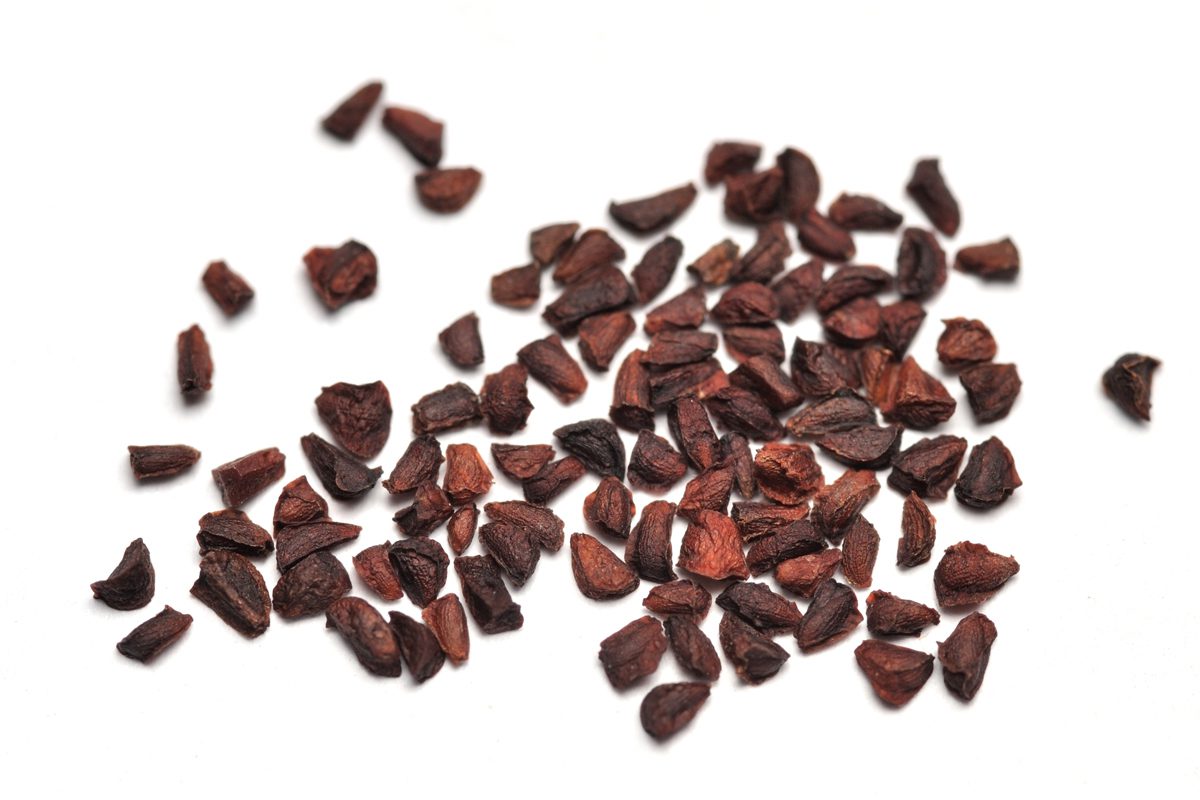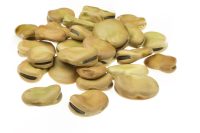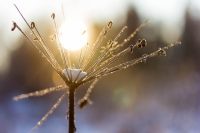Cold stratification is a pre-treatment process applied to seeds before they are sown, either in the ground or in pots. This process is essential for certain plant species native to cold regions, as it helps break seed dormancy. By simulating the cold, damp conditions of winter, stratification signals the seeds to germinate once the soil warms up in the spring.
The name “stratification” was used because seeds used to be layered (stratified) between two layers of moist soil and then exposed to cold. Some gardeners refer to stratification as cold treatment.
Why do some seeds need cold stratification?

Seed dormancy is a state in which the seed cannot germinate to prevent it from breaking dormancy during the harsh winter season. This is especially true of seeds produced in late summer and autumn (fall). By inhibiting germination, the seed increases its chances of survival as germinating immediately would expose the young and tender plant to winter conditions.
During cold stratification, seeds undergo a series of physiological changes that lead to the breaking of seed dormancy. Imbibition refers to the initial uptake of water by seeds. Exposure to the cold, moist winter environment helps to break down the seed coat, which makes it more permeable so that it can absorb water more effectively. This water uptake is a crucial first step in germination, as it swells the seed, rupturing the seed coat further and activating the following processes.
| Break down of the seed coat | Seeds requiring cold stratification often possess a hard, impermeable outer shell that prevents water and gases from passing through, making it difficult for the seed to absorb the necessary nutrients for germination.When these seeds are exposed to cold, moist conditions, water penetrates the seed coat, causing it to imbibe and initiate physiological changes that lead to germination. This process is known as imbibition and plays a crucial role in the activation of enzymes that break down stored nutrients, to provide energy to the embryo. |
| Hormonal changes | A decrease in abscisic acid levels, a hormone that inhibits seed germination, and an increase in gibberellin levels, a hormone that promotes seed germination.
This shift in hormone balance signals to the seed that conditions are now favourable for The change in hormonal levels, particularly the increase in gibberellins, activates specific genes (primarily Amylase β-1) responsible for encoding amylase proteins. This gene activation results in the transcription and translation of amylase genes, leading to the production of the enzyme. Amylase breaks down starch into simple sugars, that can then be used as energy sources or building blocks by the germinating seedling. |
| Activation of enzymes | The reduction in abscisic acid (ABA) a plant hormone that inhibits germination, combined with an increase in the hormone gibberillin (GA) stimulates the synthesis and activation of enzymes called proteases which break down protein. Proteases are targeted towards protein storage vacuoles or other compartments where storage proteins are housed. The proteases then begin to break down these large protein molecules into smaller peptides and eventually into amino acids.
Amino acids act as building blocks for the synthesis of new proteins required during germination, and can also be metabolised to provide energy or be used as a precursor for other essential metabolites. Proteases Proteases can also modify the activity of other enzymes or proteins by cleaving (splitting) them into shorter fragments. This leads to the activation, inactivation or modulation of metabolic pathways, ensuring the seed’s metabolism is geared towards germination. |
| Activation of antioxidants |
As seeds undergo metabolic changes during stratification, they produce superoxide radicals, hydrogen peroxide, and hydroxyl radicals (ROS). ROS play roles as signalling molecules in various physiological processes, their accumulation can cause cellular damage.
Antioxidants neutralise reactive oxygen species to prevent damage to fats, proteins and DNA.
|
When is the best time to cold-stratify seeds?
Winter is the ideal time to begin stratification, to prepare the seeds for planting in spring.
- Northern hemisphere: January – February
- Southern hemisphere: June – July
Seeds could be sowed directly into the ground or pots during winter, but weather conditions can be unpredictable. Also, some climates may not have a cold or wet enough winter to trigger germination, in other cases, the winter may be so wet that the seeds rot.
Do all seeds need cold stratification?
No, seeds from warm climates don’t need stratification, however, some seeds require scarification, which is a process in which the seeds are buffed to weaken the outer shell, allowing water in to trigger the natural sprouting process. In tropical environments, environmental cues, such as rainfall patterns or light conditions, play a more significant role in signalling the right time for germination.
Do you put cold stratification seeds in the fridge or freezer?
Cold stratification seeds are typically placed in a refrigerator. Seeds should not be placed in a freezer for cold stratification, as freezing temperatures can damage or kill the seeds. Instead, the ideal temperature range for cold stratification is typically between 0 and 10°C (32 to 50°F). This can be achieved in a refrigerator or other cool, but not freezing, environment. It’s important to research the specific requirements of the plant species you are working with to determine the optimal temperature and duration of cold stratification.
Seed stratification process

There are several to cold stratify seeds, we will cover the most simple stratification method, known as ‘moist seed stratification‘.
What you will need:
- Seeds
- Paper towel
- Sandwich bag
- Marker pen
- Spray bottle
- Water
- Refrigerator (set to 1 – 4°C)
Method:
- Mark the sandwich bag with the name of the seeds and the date.
- Carefully moisten the paper towel with a spray bottle, the paper should be damp but not saturated.
- Lay the seeds in a thin layer on the paper towel, and fold the paper towel over the seeds to help keep the seeds moist
- Put in the refrigerator for 30 – 90 days (until outside temperatures warm up)
Monitor the seeds daily to make sure the medium remains moist. If any seeds sprout during stratification, pot them up and keep them in a warm location inside if it is cold outside. Remove seeds that have developed mould.
Note: Some seeds may require a warmer temperature (up to 10°C) than the temperature of a refrigerator. In this case, they can be stored in a basement.
Which seeds need stratification?
| Anemone | Anemone spp. |
| Anise hyssop | Agastache foeniculum |
| Angelica | Angelica archangelica |
| Arnica | Arnica montana |
| Artichoke | Cynara cardunculus |
| Asparagus | Asparagus officinalis |
| Balloon flower | Platycodon grandiflorus |
| Barrenwort | Epimedium spp. |
| Bellflower | Campanula spp. |
| Black cohosh | Actaea racemosa |
| Black-eyed Susan | Rudbeckia hirta |
| Blanket flower | Gaillardia aristata |
| Bloodroot | Sanguinaria spp. |
| Blue star | Amsonia spp. |
| Borage | Borago officinalis |
| Brussels sprouts | Brassica oleracea var. gemmifera |
| Butterfly bush | Buddleja spp. |
| Butterfly weed | Asclepias tuberosa |
| Catchfly | Silene spp. |
| Catnip | Nepeta spp. |
| Chamomile | Matricaria chamomilla |
| Chinese lantern | Physalis alkekengi |
| Clematis | Clematis spp. |
| Common boneset | Eupatorium perfoliatum |
| Common mallow | Malva sylvestris |
| Common milkweed | Asclepias syriaca |
| Coral bells | Heuchera spp. |
| Creeping thyme | Thymus serpyllum |
| Delphinium | Delphinium spp. |
| Echinacea (coneflower) | Echinacea spp. |
| False indigo | Baptisia spp. |
| False sunflower | Heliopsis helianthoides |
| Foxglove | Digitalis spp. |
| Fuchsia | Fuchsia spp. |
| Geum | Geum spp. |
| Globe flower | Trollius spp. |
| Globe thistle | Echinops spp. |
| Goldenrod | Solidago spp. |
| Great burnet | Sanguisorba officinalis |
| Hardy plumbago | Ceratostigma spp. |
| Helen’s flower | Helenium spp. |
| Hellebore | Helleborus spp. |
| Hibiscus | Hibiscus spp. |
| Hollyhock | Alcea spp. |
| Hyssop | Agastache spp. |
| Indian pink | Spigelia spp. |
| Joe-Pye weed | Eupatorium maculatum |
| Lady’s mantle | Alchemilla spp. |
| Lavender | Lavandula spp. |
| Lemon balm | Melissa officinalis) |
| Licorice | Glycyrrhiza glabra |
| Lilac | Syringa spp. |
| Lobelia (cardinal flower) | Lobelia spp. |
| Loosestrife | Lysimachia spp. |
| Lupine | Lupinus spp. |
| Marshmallow | Althaea officinalis |
| Masterwort | Astrantia spp. |
| Meadowsweet | Filipendula ulmaria |
| Milkweed | Asclepias spp. |
| Monkshood | Aconitum spp. |
| Oxeye sunflower | Heliopsis helianthoides |
| Pansy | Viola tricolor var. hortensis |
| Pasque flower | Plusatilla vulgaris |
| Peony | Paeonia spp. |
| Perennial flax | Linum perenne |
| Peruvian lily | Alstroemeria spp. |
| Phlox | Phlox spp. |
| Plantain lily | Hosta spp. |
| Poppy | Papaver spp. |
| Primrose | Primula vulgaris |
| Red hot poker | Kniphofia spp. |
| Rosemary | Rosmarinus officinalis |
| Sage | Salvia officinalis |
| Sea holly | Eryngium spp. |
| Skullcap | Scutellaria spp. |
| Speedwell (Veronica) | Veronica spp. |
| Spiderwort | Tradescantia spp. |
| Spring adonis | Adonis vernalis |
| Spring corydalis | Corydalis solida |
| St. John’s Wort | Hypericum perforatum |
| Sweet cicely | Myrrhis odorata |
| Swiss chard | Beta vulgaris subsp. cicla) |
| Sweet woodruff | Galium odoratum |
| Tansy | Tanacetum spp. |
| Thyme | Thymus vulgaris |
| Tickseed | Coreopsis spp. |
| Toad lily | Tricyrtis spp. |
| Valarium | Valeriana officinalis |
| Viburnum | Viburnum spp. |
| Violet | Viola spp. |
| Whirling butterflies | Gaura lindheimeri |
| Wild garlic | Allium ursinum |
| Wild indigo | Baptisia tinctoria |
| Winter aconite | Eranthis hyemalis |
| Wintergreen | Gaultheria procumbens |
| Yarrow | Achillea millefolium |
Is cold stratification really necessary?
Some seeds will germinate even without stratification, but stratification can increase the germination rate. I have sown a number of cottage plant seeds without stratification. My foxgloves from last year self-sowed and I have a large collection of baby foxgloves in the garden. However, if you have purchased cold climate seeds that should be stratified, it is recommended.
Some plant species, particularly those native to colder climates, have evolved to require the moist, cool conditions of winter to break their dormancy and initiate germination in spring. By exposing the seeds to a period of cold stratification, which mimics these natural conditions, the germination process can be jump-started for these species.
Therefore, if you have purchased seeds of plants that require cold stratification, it is always advisable to follow the recommended stratification period and conditions for optimal germination.
Conclusion
- Cold stratification is a simple process of exposing seeds to a period of moist, cool conditions to break their dormancy and promote germination.
- Cold stratification mimics the natural conditions many plant seeds would experience in the wild during winter when cold temperatures and moisture help to prepare the seeds for spring germination.
- By properly cold-stratifying seeds, gardeners can increase the germination rate of seeds.
- Cold stratification can be achieved by placing seeds in a moist medium, such as sand or vermiculite, or a damp paper towel and placing them into a refrigerator or other cool location for a period of time ranging from several weeks to months.
Julia is a writer and landscape consultant from Wollongong with a love of horticulture. She had been an avid gardener for over 30 years, collects rare variegated plants and is a home orchardist. Julia is passionate about learning and sharing her knowledge of plant propagation and plant toxicology. Whether it’s giving advice on landscape projects or sharing tips on growing, Julia enjoys helping people make their gardens flourish.




